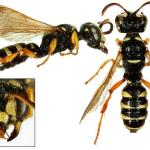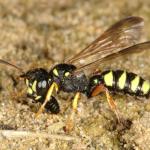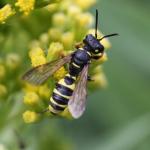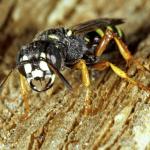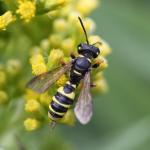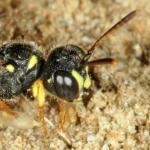This species is a very close relative of C. ruficornis and care is necessary to distinguish between them, particularly when identifying males.
Although widely distributed in southern England (especially in the south-east), this is a rare species. The majority of records are old, the most recent including individuals collected in Kent, Essex, Suffolk, Norfolk and Oxfordshire. Where found, this wasp may be quite common; for example, O W Richards collected a long series at Studland cliffs towards Old Harry Rocks, Dorset, in July 1939 (specimens in the Natural History Museum, London).
Listed as Rare (RDB3) in Shirt (1987) and Falk (1991).
The species flies from mid-July to late August.
Small curculionid beetles.
The biology of this species is much less well known than that of C. arenaria, but is likely to be very similar. Nests are often aggregated and tend to occur in relatively hard sandy soil, such as paths (Hamm & Richards, 1930). Prey is again primarily weevils, but generally smaller species (e.g. Apion, Sitona), so that each cell often contains 50 or more specimens, there being up to ten cells per nest (Grandi in Lomholdt, 1976).
Bramble and creeping thistle.
1997


